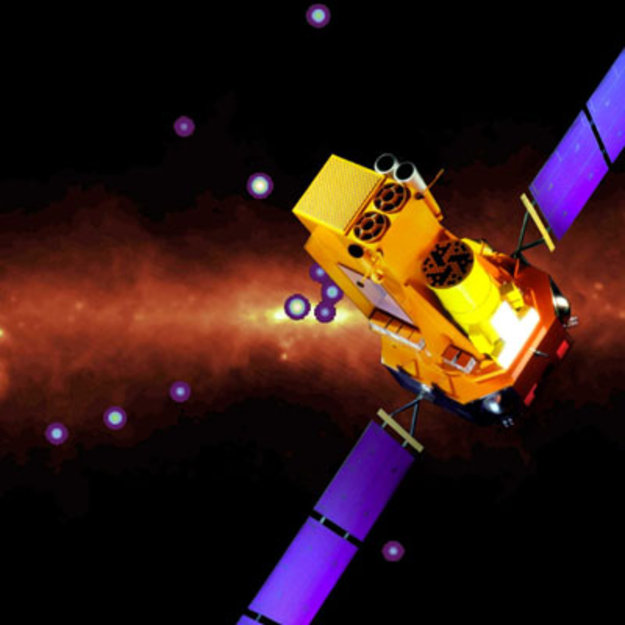
- 09 Aug, 2013
- Archives, Online Data Analysis, Software, Support
Project Description
The INTErnational Gamma-Ray Astrophysics Laboratory (INTEGRAL), is an astronomical satellite for observing the gamma-ray sky. It was selected by the science program committee of the European Space Agency (ESA) on June 3rd, 1993 as a medium size mission.
After satellites such as the Compton Gamma-Ray Observatory (CGRO) launched by the Americans and the Russian-European satellite GRANAT, INTEGRAL is the first gamma-ray mission conceived from the beginning as an observatory, with observing time open to everyone.
The INTEGRAL satellite is about 5 meters high and more than 4 tonnes in weight. It was launched on October 17, 2002 by a Russian PROTON launcher from Baikonur in Kazakstan. The image on the right shows the nominal orbit of the INTEGRAL satellite. It is a highly eccentric orbit with a revolution period around the Earth (blue sphere) of 3 sideral days (slightly less than 72 hours). The closest point to Earth, the perigee, is at an altitude of about 10'000 km and the most distant point of the orbit, the apogee, is at about 150'000 km, which is roughly one half of the Earth-Moon distance. The inclination of the orbit with respect to the equatorial plane was 51.6 degrees at launch, this angle increased slowly with time towards the almost polar current orbit. The highly excentric orbit was chosen to minimise the periods with highly unstable instrument background due to electrons and protons trapped in the radiation belts (in yellow) and to allow for long periods of uninterrupted observation.
INTEGRAL was designed for a nominal lifetime of 5 years. The spacecraft and instruments are working extremely well. In October 2009 it was decided to extend the mission at least up to the end of 2012.
